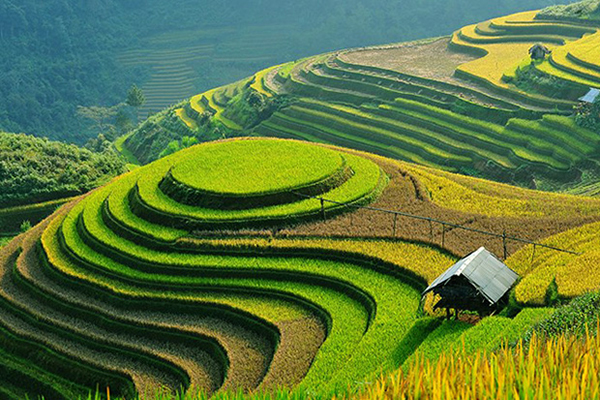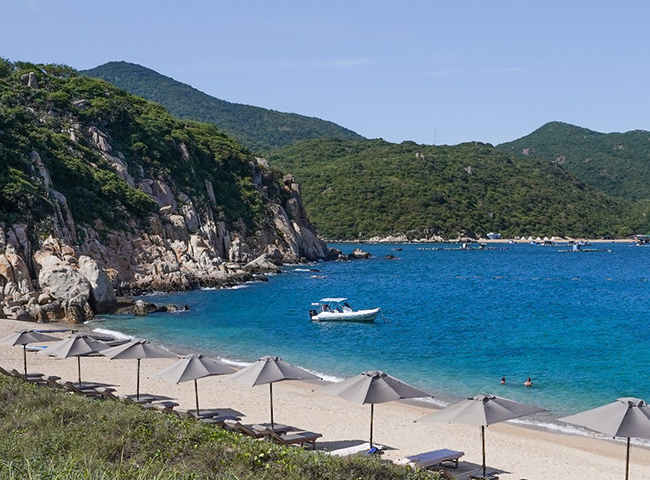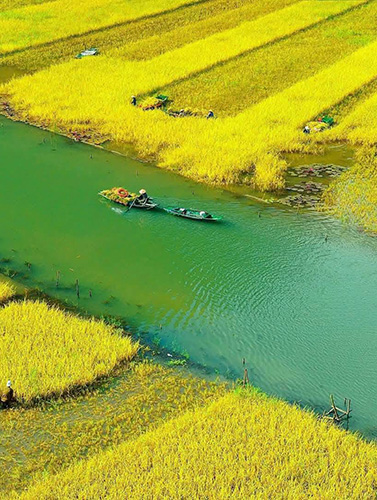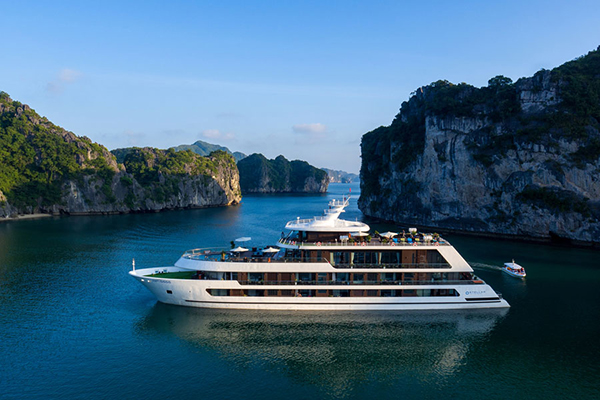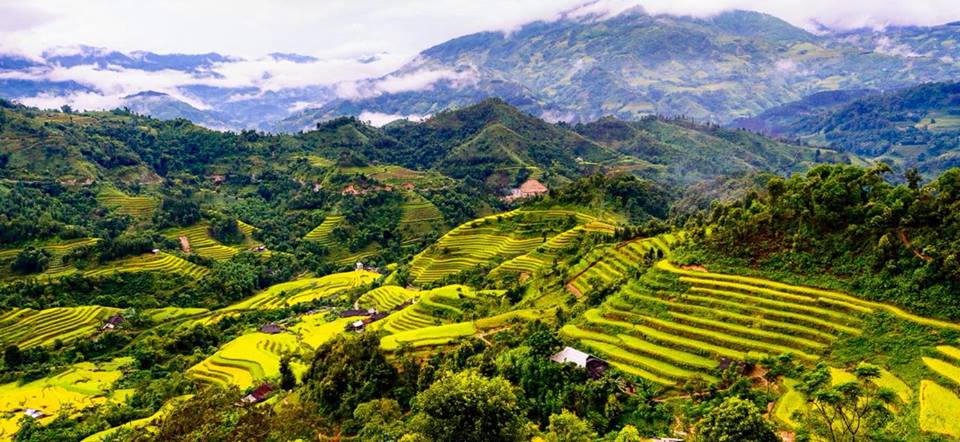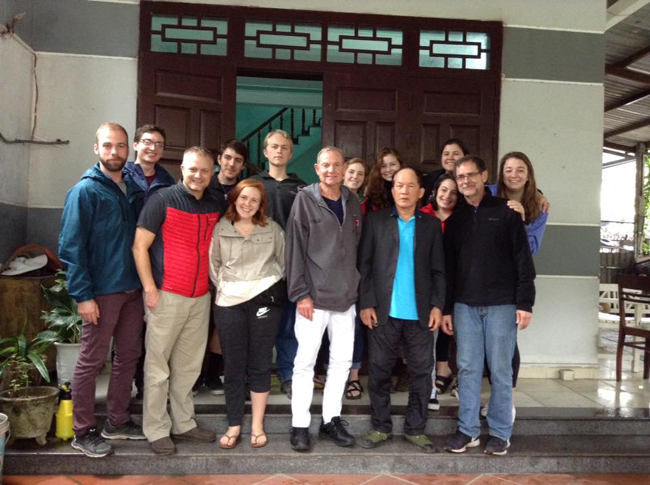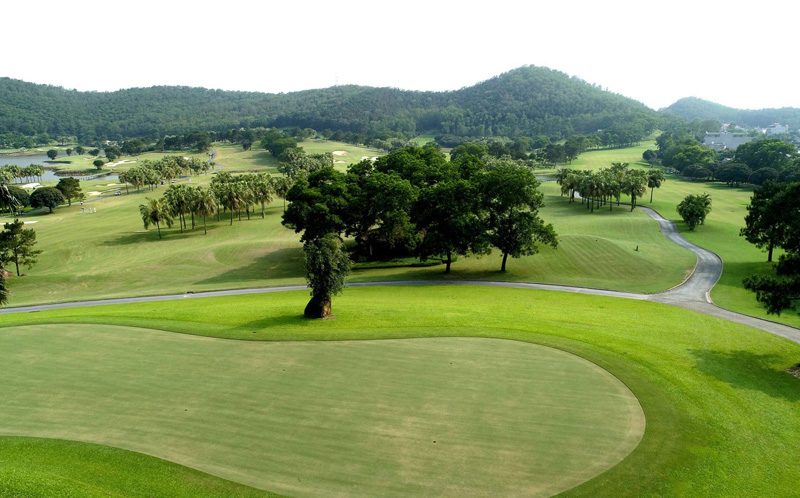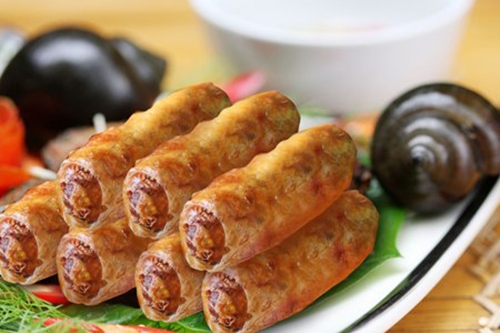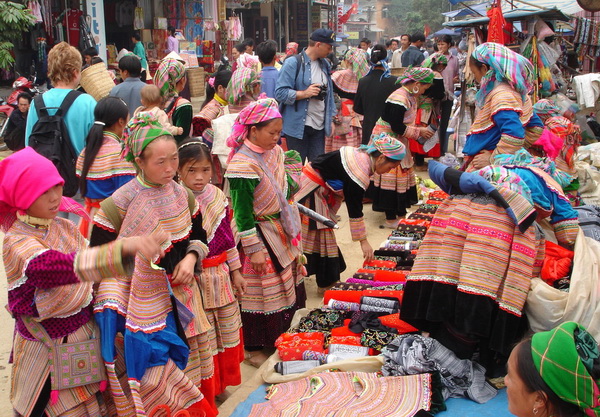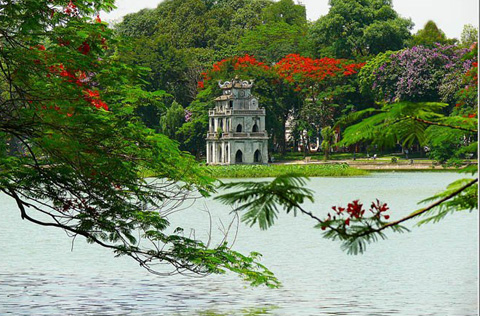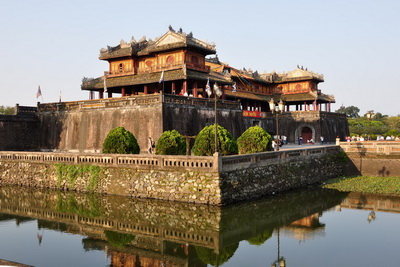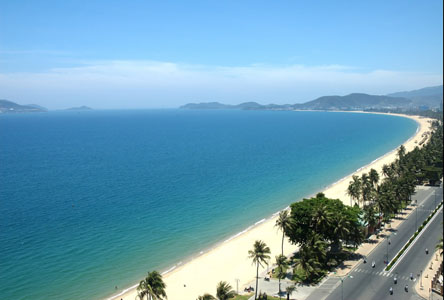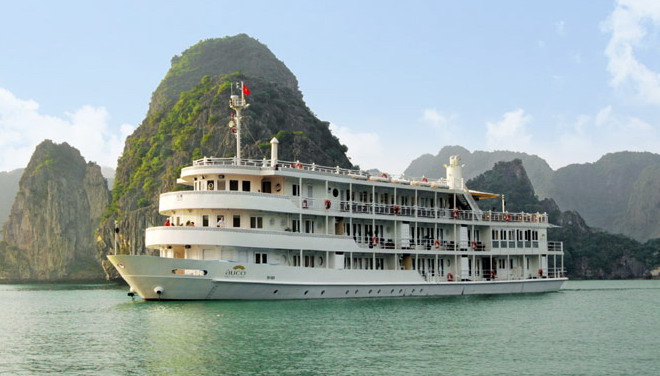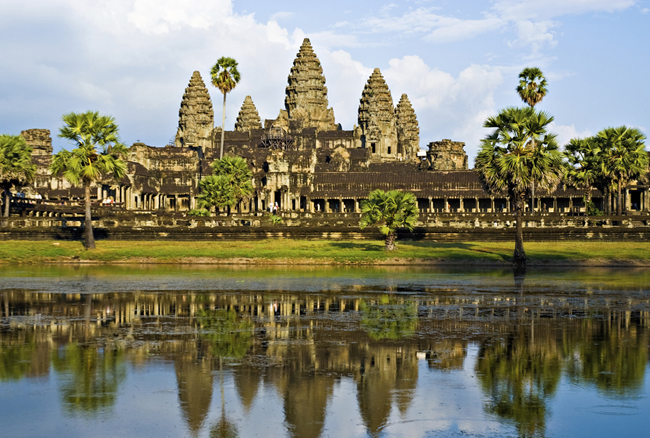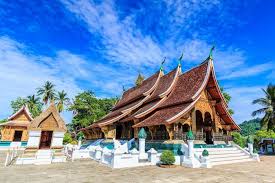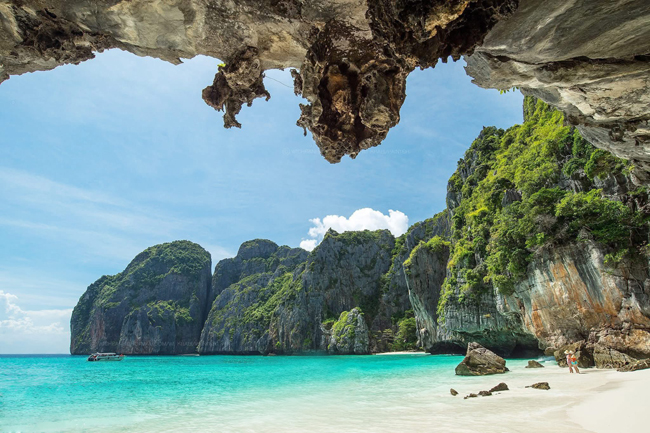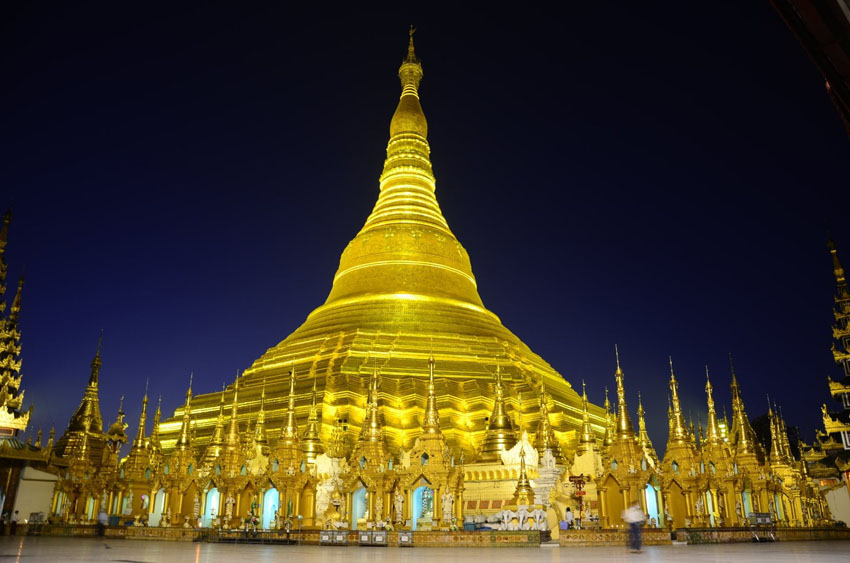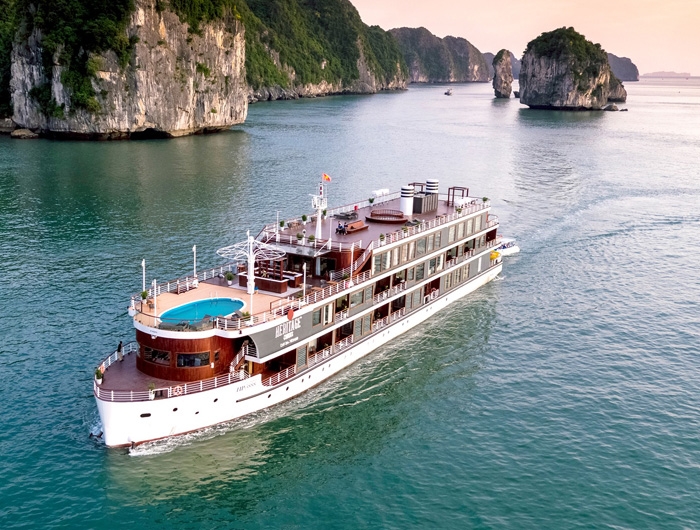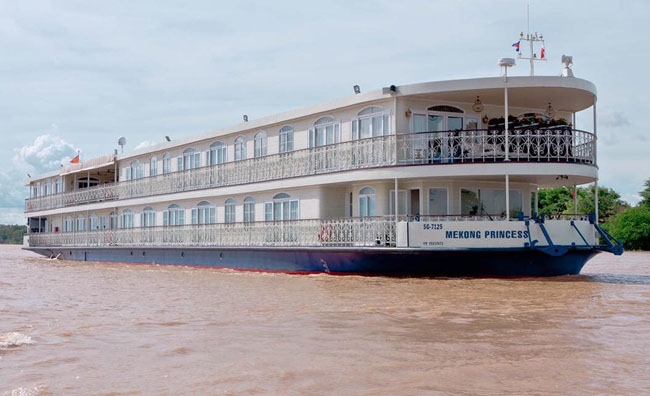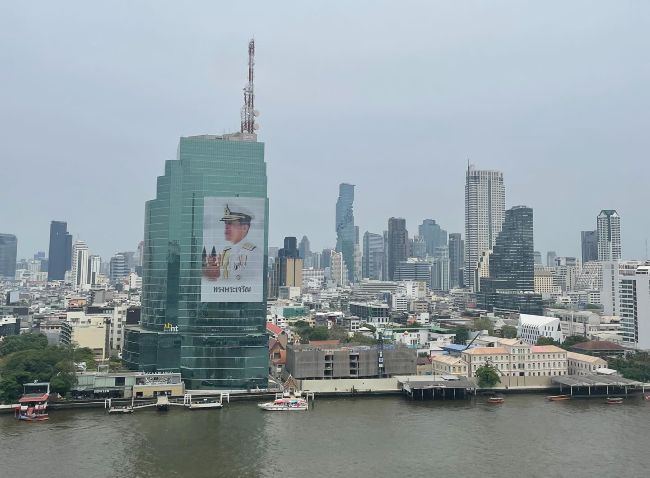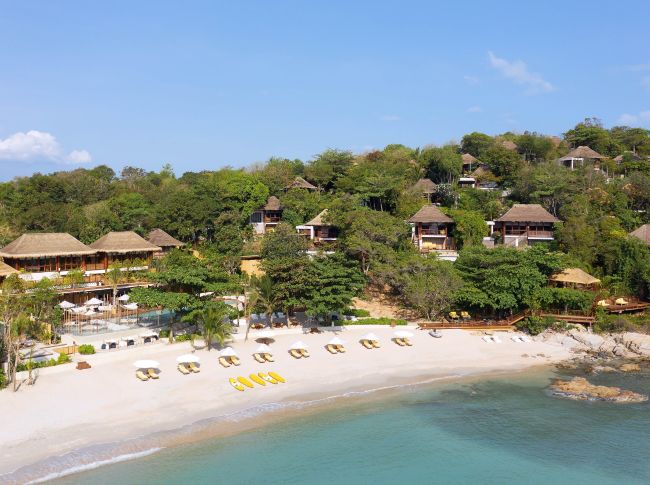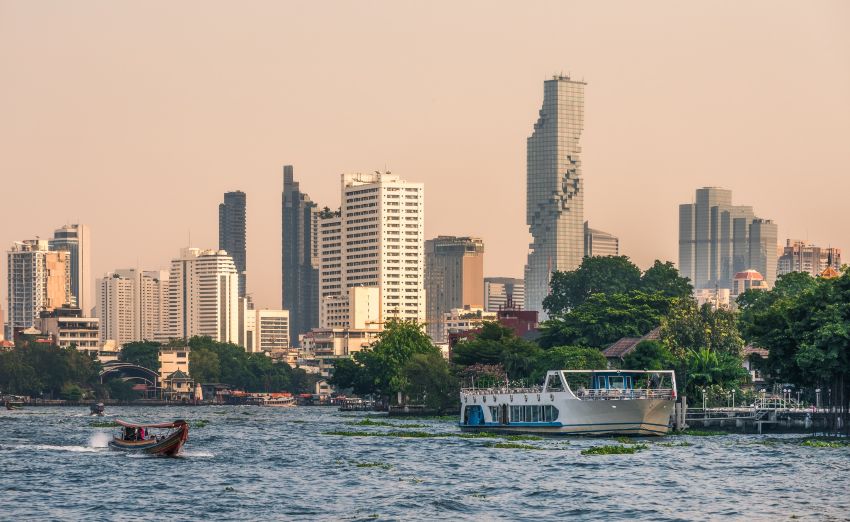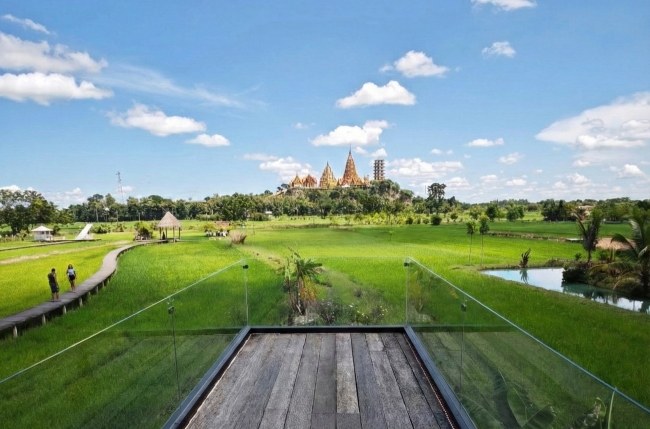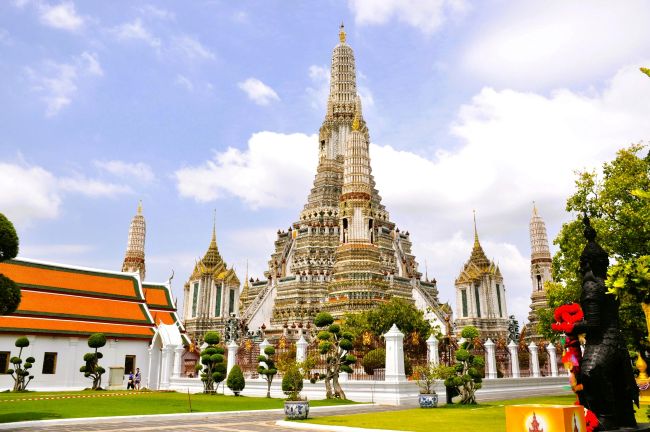The Grand Palace
The Grand Palace is a complex of buildings at the heart of Bangkok, Thailand. The palace has been the official residence of the Kings of Siam (and later Thailand) since 1782. In 1782 the new King decided to move the capital city to the left bank of the Chao Phraya River for strategic purposes and used the canals to the west as defenses for the new city. A palace was constructed whose grounds currently covers an area of 218,000 square metres that are enclosed by crenallated walls measuring 19,000 metres. Similar to palaces in the former capitals of Sukhothai and Ayudhaya this palace is also laid out with Halls of Residence and Throne Halls as well as administrative buildings and a temple that serves as the Chapel Royal.. The palace is one of the most popular tourist attractions in Thailand, with over eight million people visiting each year.
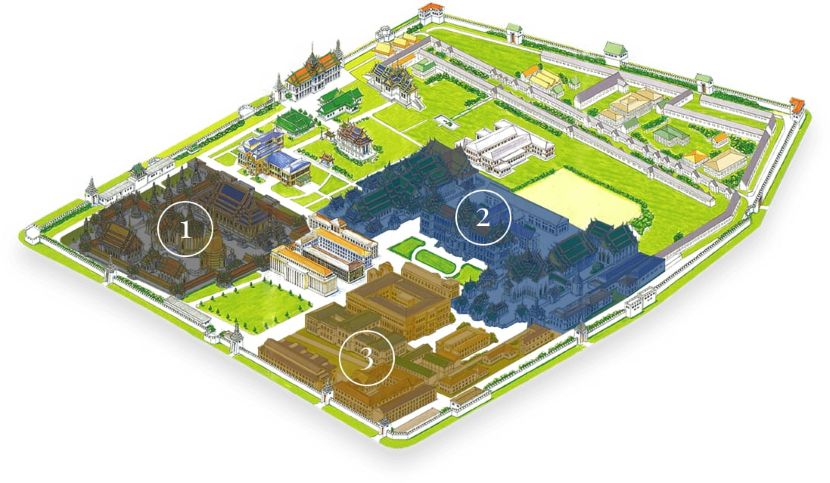
The Plan of The Grand Palace
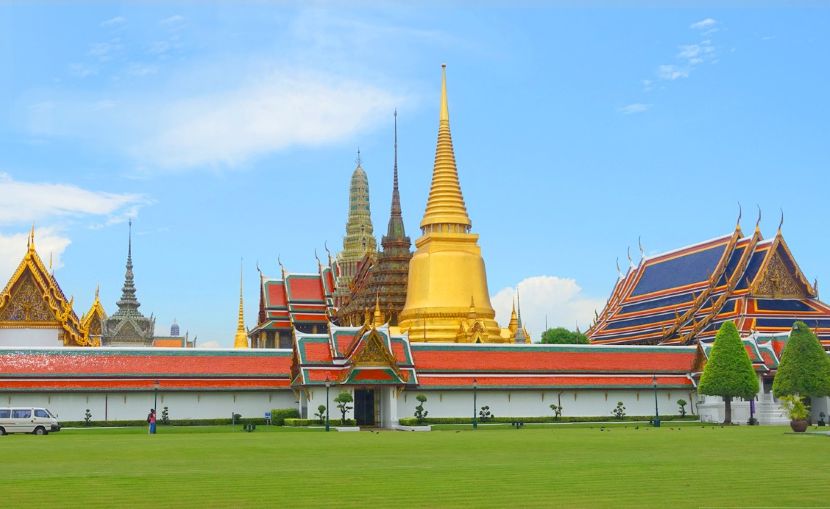
WHAT ARE INSIDE THE GRAND PLACE
The Temple of the Emerald Buddha
The Temple that is located to the northeast of the Front Court has a cloister that serves as a boundary wall to enclose all the structures indicative of a Buddhist monastery but was constructed with no living quarters as Buddhist monks do not reside in this Temple. Rama I installed the Emerald Buddha in the Chapel Royal and conferred the temple name as Wat Phra Sri Rattanasasadaram that can be translated as the Temple of the Auspicious Buddha image that is crafted from a precious stone. The temple is also colloquially called Wat Phra Kaew as ‘Rattana’ is Sanskrit for precious stone in reference to the Emerald Buddha. Twelve sala or pavilions with marble bases are placed to the north and south and are parallel to the Phra Ubosoth (Convocation Hall) for the faithful to sit and listen to sermons on Buddhist holy days or to chant rhyming stanzas on special occasions of the Buddhist calendar.
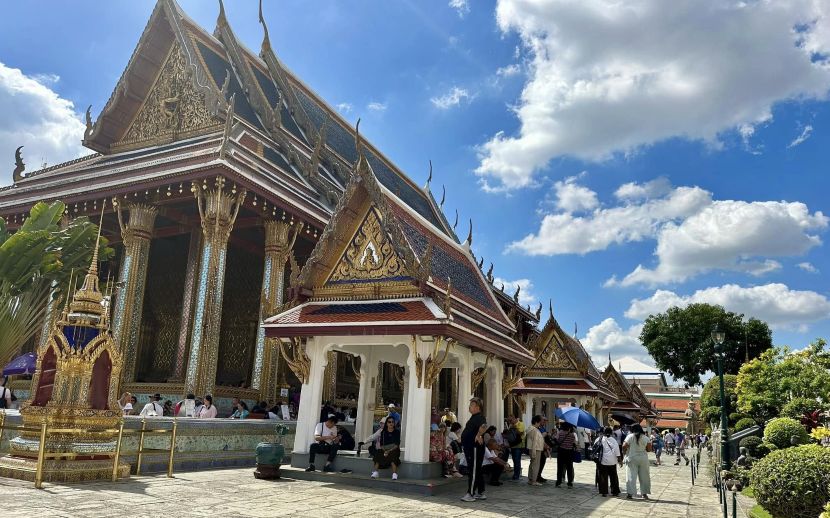
Ho Phra Monthien Tham
The Prince of the Front Palace who served as the Viceroy and was the younger brother of Rama I built this building as an auxiliary library for Thai palm leaf scriptures that were kept in gold leaf lacquered cabinets. The central door panels brought down from a temple in Ayudhaya are of mother-of-pearl inlay expertly crafted by artisans of the 18th century. At present a Buddhist monk is invited to give a sermon to the faithful every Sunday and on holy days of the Buddhist calendar that does not coincide with a royal ceremony held in the Temple of the Emerald Buddha.
Phra Vihara Yod Chapel
Constructed by Rama III to replace a Rama I building for Buddha images cast from the remains of bronze Buddha images collected from the ruins of temples in the old capital of Ayudhaya the chapel also accommodated the Phra Nak that was moved from the former Ho Phra Nak. The building is decorated with porcelain dishes and plates imported from China or pieces that were broken during transport and fashioned into floral and geometric patterned mosaics. Plaster covered with porcelain also replaced traditional wood structures such as pediments and finials and porcelain also decorated the Thai Crown spire that surmounted the roof.
Ho Phra Nak
The Phra Nak that is a standing gold-copper alloy Buddha image installed by Rama I as the major image in the original brick and white-washed plaster building was moved by Rama III to the adjacent Vihara Yod in order for a larger replacement building to be constructed. The new building retained the name of Ho Phra Nak but was now used as a mausoleum to contain small reliquary urns of princes of the Front Palace, consorts of the Grand Palace and children of the King of the rank of Phra Ong Chao born of consorts and concubines. On the 16th of April of each year the descendants of the princes in the mausoleum are allowed to pay their respects inside the building as part of the Thai new year Songkran rites.
Replica of Angkor Wat
A replica in concrete of the 12th century Angkor Wat in Kampuchea was conceived by Rama IV in lieu of moving a stone Khmer temple to the Grand Palace. Completed in the reign of Rama V it stands as a hand crafted miniature of a renowned architectural marvel.
The Royal Pantheon
The Prasad Phra Thepbidon Royal Pantheon is a building that has a Prang or corncob spire surmounting its roof. Geometric patterns of coloured glass mosaics adorn its exterior walls and pillars that are interspersed .with ceramic tiles. Constructed in the reign of Rama IV with the intention of using it for royal ceremonies and to enshrine the Emerald Buddha at eye level but when completed it was deemed that the size was inappropriately small. When an electrical fire destroyed the roof structure in 1903 requiring extensive repairs that continued into the reign of Rama VI who decided to relocate life-size gilt-bronze statues of his predecessors and place a bronze life-sized statue of his father, Rama V, into this sacrosanct building dedicated as a Royal Pantheon.
At present life-sized bronze statues of the former sovereigns of the Royal House of Chakri, Rama I to Rama IX, are ensconced in the original three wall niches and on gilt platforms in order that the Royal Family can pay their respects at appropriate times. The Royal Pantheon is also annually opened to the general public on specific dates as follows:
- 6 April, Chakri Day
- 13 – 15 April, the Festival of Songkran (Thai New Year)
- 4 May, Coronation Day Anniversary of the Present Reign, Rama X
- 28 July, Birthday Anniversary of the Present Reign, Rama X
- 13 October, Day of Commemoration of the passing of King Bhumibol Adulyadej the Great, Rama IX
- 23 October, Rama V Day
- 5 December, Commemoration of King Rama IX and National Day.
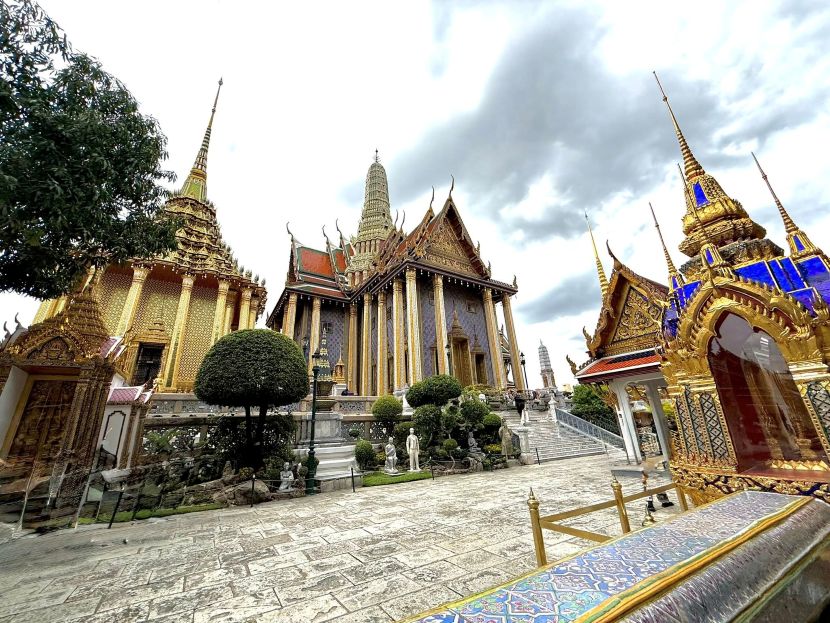
Phra Mondop
This traditional square building with mother-of pearl inlay doors topped by a Thai mondop spired roof was constructed by Rama I to hold a large lacquered mother-of-pearl inlay cabinet containing palm leaf Buddhist Tripitaka scriptures. The exterior walls are covered in glass mosaic and around the base are rows of gilt-stucco Thepanom folded-palm deities atop a row of Asura giants interspersed with mythical Garudas. Four pairs of gilt-bronze statues of giants from the story of Ramakian guard the entrances of the building which has human faced Naga-serpents of gilt-stucco forming the balustrades of the stairs leading up to the building. Placed at the four corners of the elevated building are replicas of stone Buddha images of the 14th century as the original images carved from volcanic stone which were presented by the Dutch Governor General to Rama V during his 1896 royal visit to the Borobudur Temple on the island of Java, Indonesia, have now been placed in the Museum of the Temple of the Emerald Buddha in the Grand Palace.
Phra Sri Rattana Chedi
This bell-shaped chedi or stupa of brick and mortar that was constructed in 1855 during the reign of Rama IV to house relics of the Buddha was originally white-washed but was later covered with gold mosaic tiles imported from Italy during the reign of Rama V in time to mark the centenary of Bangkok in 1882. Gold mosaic tiles were again imported in 1982 to retile damaged parts of the chedi as part of the major renovation of the temple for the bicentenary of Bangkok during the reign of Rama IX.
Ho Phra Ghandhararat
Rama IV had the building constructed for the bronze Gandhararat Buddha image cast by Rama I that is in the attitude of invoking rain which is used in the Buddhist ceremony for blessing of rice grains that are then sown during the annual Royal Ploughing Ceremony which is a Brahmin ceremony for fecundity of the rice fields. The exterior of the building is decorated with yellow, green and blue porcelain tiles that were locally produced. The seperate back hall that has a corncob spired roof on a high base enshrines a small ancient gilt-bronze chedi brought down from the north by Prince Mongkut when he was a Buddhist monk. Prince Mongkut acceeded to the throne as Rama IV in 2394 B.E. (1851).
The Phra Ubosot (Convocation Hall)
The Phra Ubosot is constructed in the midst of a chest height boundary wall with eight double-sema boundary stones that mark a consecrated area and the double-sema boundary stones signify that the temple was constructed by a king. Built in accordance with traditional Thai style architecture with multi-tiered roofs of coloured tiles with finials, roof ridges, and lotus-captal pillars this building of brick and white washed plaster has exterior walls that are decorated with gilt and coloured glass mosaics fashioned into geometric patterns. The interior west wall above the doors is painted with the conception of Buddhist cosmology while the east wall depicts the scene of temptation and enlightenment of the Buddha. The south and north walls depicts episodes from the traditional life-story of the Buddha and below the windows on the south wall is a long mural of a rivereine procession of fanciful royal barges manned by diversely dressed oarsmen whereas the north wall depicts a land procession with persons of importance astride horses or on caparisoned elephants with armed personnel marching in rank and file formation. The base of the Ubosoth on the north and south side is decorated with 112 gilded bronze Garuda seizing 2 Naga by their tails while clutching their heads. Pairs of bronze Singha lions guard the 6 east and west doors that have door panels of expertly crafted mother-of-pearl inlay of gods and demons and mythical animals of the Himavamsa Forest in the heavenly abodes. The 9 mother-of-pearl inlay panels of the 9 north windows and 9 south windows have also been crafted to exacting standards.
Belfry
The current belfry that is decorated in floral and foliage patterns with bits and pieces of broken imported Chinese porcelain was begun in the reign of Rama IV to replace the belfry that was built by Rama I and was completed in time for the Centenary of Bangkok in the reign of Rama V. As there are no residing monks in the Temple of the Emerald Buddha the bell is not rung to mark the time for prayers or for meals but is rung to mark important occasions such as a installation of the Emerald Buddha in the Chapel Royal, the Coronation Ceremony or a Ceremony of Installation of a Supreme Patriarch as well as every 50 years to mark the founding of Bangkok as the capital city in 2325 B.E. (1782). It is said that the bronze bell in the belfry has the most melodious sound of any bell that has ever been cast.
Ho Phra Rajakaramanusorn and Ho Phra Rajapongsanusorn
Twin buildings behind the Chapel Royal was built by the royal command of King Rama IV to place Buddha images that were cast by Rama III and dedicated to the former kings of the nation. The Ho Phra Rajakaramanusorn to the north contains 34 small Buddha images dedicated to the 33 kings of the Ayudhaya period and 1 to the Dhonburi period. The Ho Phra Rajapongsanusorn to the south has Buddha images dedicated to the kings of the Bangkok period cast by Rama IV and subsequent monarchs.
The Emerald Buddha
The Emerald Buddha that is considered to be an object of national veneration is carved from a block of jasper in the attitude of meditation and is enshrined high up on a tiered base in an altar of gilded wood designed to represent the Busabok aerial chariot of heavenly beings. Because of its colour it is called the “Emerald Buddha” and measures 66 cms. in height that includes the base and is 48.3 cms. in width from knee to knee. Believed to be of northern Thai workmanship of the 15th century the image has three different raiments which are changed by the king on specified dates of the lunar calendar. The raiments for the summer and rainy seasons were dedicated by King Rama I and the winter raiment was dedicated by King Rama III. All of the raiments are exquisitely crafted from gold and embellished with diamonds and precious stones.
Two large gold plated royal-attired Buddha images of 3 metres height in the attitude of Calming the Ocean was cast in 1848 by King Rama III and placed in front of the high altar containing various Buddha images. The one to the north was named Phra Buddha Yod Fa Chulalok in dedication to his grandfather, Rama I. The one to the south was named Phra Buddha Loetla Sulalai in dedication to his father, Rama II. (Renamed as Phra Buddha Loetla Napalai in the Fourth Reign) The names of these two Buddha images thus became the names of the two preceding kings, who had hitherto been referred to as ”The Initial Reign” and “The Middle Reign”.
The Cloisters
The Cloisters that enclose the Temple buildings have walls that are painted with 178 episodes of the Ramakien story as composed by Rama I and follows Prince Rama’s quest to rescue his beloved wife, Sida, from the clutches of Thosakan, the ten-heads and twenty-arms demon King of Longka. The episodes are painted in a clockwise progression starting from the north door of the cloister opposite the Phra Vihara Yod chapel. Its scenes depict gods and humans, monkeys and demons, life inside and outside the palace and cities while four legged animals, birds and mythical animals of the Himavansa Forest abound in the jungles, plains and oceans.
Giant Asura Guardians
Six pairs of statues of Asura or giants are placed as guardians with their backs to the gates inside the temple compound facing the Phra Ubosoth to show deference to the Emerald Buddha. Built in the reign of Rama III they represent characters from the Thai Ramakien which is a story authoured by King Rama I based on the ancient Sanskrit Ramayana Epic. The Ramakian story of the First Reign is also depicted in the murals of the cloisters with scenes of Gods and humans, palace and pastoral scenes as well as battle scenes among humans and armies of demons and monkeys.
Phra Asada Maha Chedi or Eight Prang Towers
Rama I had eight prang or corncob towers on the east of the temple constructed to function as a Chedi monument worthy of veneration. The plastered brick chedi are decorated with stucco motifs and glazed tiles of differing colours and dedicated to eight Buddhist concepts.
- White for the Buddha
- Dark Blue for the Dhamma
- Pink for the Sangha or order of monks
- Green for the order of nuns
- Grey for the Buddhas in their previous incarnations
- Greyish blue for universal powerful monarchs
- Red for the Bodhisattvas who gain enlightenment but do not preach
- Yellow for the future Buddha
Phra Barom Sanyalak Busabok
Four small gilt-bronze busabok that are elevated on marble plinths around the Phra Mondop contain gilt-bronze emblems of the former nine Kings of the Bangkok period. At the base of each busabok are bronze elephant statues on marble bases that represent the auspicious white elephants consecrated in each of the reigns.
- Rama I The Crown
- Rama II Garuda Seizing Nagas
- Rama III The Viman Facade
- Rama IV The Maha Mongkut Great Crown of Victory
- Rama V The Chula Mongkut Crown without ear coverings
- Rama VI The Vajira with lightning bolts
- Rama VII The Three Sacred Arrows on a stand with the Chakri emblem topped with a crown
- Rama VIII A Bodhisattva
- Rama IX The Chakra and Unalom on the Octagonal Throne underneath the Nine–tiered White Umbrella of State
Bronze Hermit
This bronze figure was cast by the royal command of Rama III to commemorate hermits who were knowledgeable in various skills including herbal medicine. A traditional medicine grinding stone and rectangular receptacle was therefore placed in front of the statue for members of the Court to grind herbs for greater efficacy.
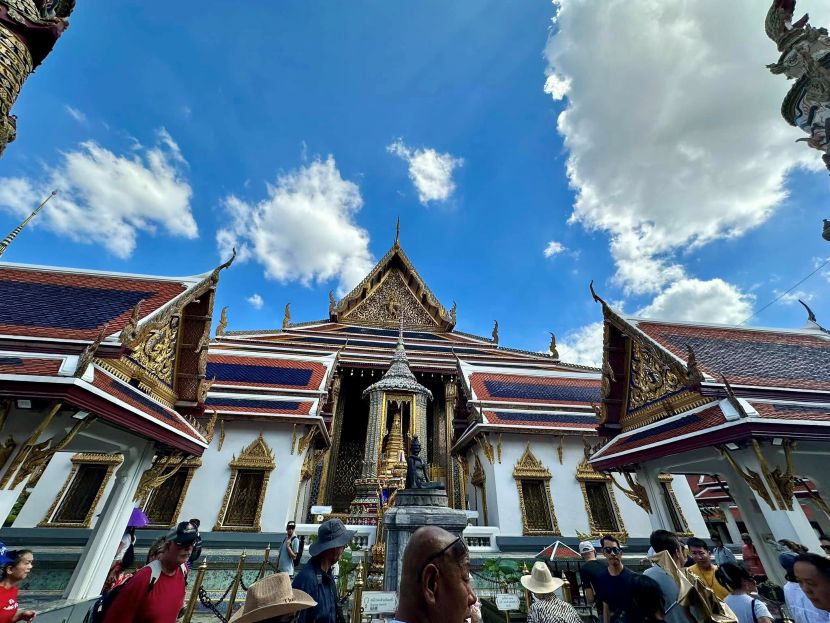
Bodhit Dhat Biman
The Bodhi Dhat Biman gilt-bronze stupa of the Fourth Reign enshrines a relic of the Buddha and leaves from a Bodhi tree from Bodh Gaya in India under which Buddha attained enlightenment. It is placed in a corncob pavilion situated on the west boundary wall and is flanked by the Ho Phra Rajakaramanusorn and the Ho Phra Rajapongsanusorn.
Twin Gold Chedi
The pair of gilt-copper redented chedi which now stands in front of the Royal Pantheon was constructed by Rama I with the chedi on the south dedicated to his father and the chedi to the north dedicated to his mother. Stucco monkeys and giants of different skin colours and costumes support the base of the two chedi.
VISIT
For Thai People
Access to the Palace and the estate of Trianon is free for Thai people. You can show the ID card at the entrance to visit The Grand Palace and Wat Phra Kaew. Free for Thai people.
For Foreigners
500 baht for Foreigners. Inclusive of access to Wat Phra Kaew and Queen Sirikit Museum of Textile, which are located within The Grand Palace compound.
You can buy tickets to The Grand Palace including Wat Phra Kaew at the entrance gate. Or you can buy tickets online now.
Dress Code
Visitors to The Grand Palace must dress appropriately because The Grand Palace is a place of reverence for the Thai people. Inappropriate clothes for entry into The Grand Palace are as follows:
- No sleeveless shirts
- No vests
- No short top
- No see through tops
- No short hot pants or short pants
- No torn pants
- No tight pants
- No bike pants
- No mini skirts
- No pants skirts
- No sleeping suit
No Drone Zone
- Drone is not allowed flying over the area of the Grand Palace
OPENING HOURS:
Open daily from 8h30 to 16h30
ACCESSIBILITY
Everyone is welcome at The Grand Palace. We offer a variety of free programs and services to make The Grand Palace accessible to you.
Wheelchairs
You can borrow wheelchairs for free from the cloakrooms just inside the Exhibition Road entrance.
Accessible Toilets
Wheelchair-accessible toilets and baby-changing facilities are clearly marked on the Museum map and floor plans
GETTING HERE
Sky Train (BTS)
BTS Saphan Taksin Station Exit 2
Walk to the Chao Phraya River. Under the bridge there is a Sathorn Pier. Chao Phraya Express Boat, orange flag.
Take the boat at Tha Chang (N9).
The royal palace on the right.
By MRT
MRT Sanam Chai Station Exit 1
Take the bus no. 3, 9, 44, 47, 53 and 82
By Boat
This is one of the most popular ways to The Grand Palace. Take an express boat to Tha Tien (N8) along the Chao Phraya. Once you walk out of the pier walk past the food stalls until you get to a large road junction.
In front (slightly to the right) is The Grand Palace.
Take a right here and walk about 10 minutes until you come to Wat Pho which will be on the other side of the road. Otherwise get on a tuk tuk but they'll probably over charge a lot for this short distance.
By Bus
Buses go straight to The Grand Palace and Wat Phra Kaew The bus that passes through the palace and the nearest temple is Wat Phra Kaew. 1, 3, 9, 15, 25, 30, 32, 33, 43, 44, 47, 53, 59, 64, 80, 82, 91, 203, 503, 508, 512
By Private car
If you travel by private car, there are car parks around:
Wat Mahathat, Tha Maharaj soi Thapphen, beside City Pillar Shrine, Rajadamnern Road Car Park, Soi Wat Pho, Wat Rakang Parking Building.
By Tuk Tuk
Unless you are used to tuk tuk bargaining
it might end up costing you more than a taxi to get there.
If possible arrange a price beforehand with a little bargaining.

